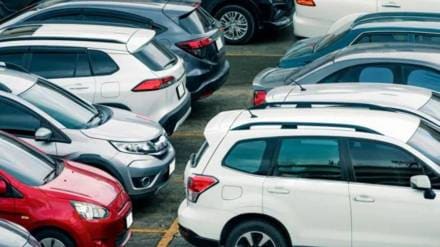Passenger vehicle sales picked up speed in September as the goods and services tax (GST) rate cuts boosted demand ahead of the festive season, helping the industry clock its best monthly growth in nine months. Dispatches of cars and SUVs rose 5.42% year-on-year to 381,437 units, marking a sharp turnaround from the sluggish performance seen through most of this year.
The surge followed the rollout of GST 2.0 from September 22, which lowered the levy on mass-market vehicles to 18% from 28%. Coupled with the onset of Navratri, the change translated into heavy customer traffic at showrooms and brisk dealer orders, even though some companies continued to grapple with supply chain bottlenecks.
Market shake-up and GST impact on top players
Maruti Suzuki, the market leader, was the only large manufacturer to post a decline. Its September domestic wholesales dropped 8% to 132,820 units, pulled down by weak numbers in the mini car segment and a fall in utility vehicle dispatches. The company attributed the dip not to demand but to logistical constraints that crimped supplies late in the month. It said retail sales grew nearly 28% to 173,500 units and that bookings swelled 35%, with 350,000 fresh orders received during September alone.
Partho Banerjee, senior executive officer for marketing and sales, noted that the company retailed 165,000 units in the first eight days of Navratri alone, its best showing in a decade. He added that the GST-led price rationalisation has fuelled demand, especially in entry-level cars, and that Maruti is considering expanding production capacity to clear a pending order backlog of 250,000 vehicles.
The month also saw the industry’s pecking order shifting. Tata Motors regained the number two position, registering the highest growth among top players. Its domestic sales soared 45% to nearly 60,000 units, with electric vehicles alone accounting for 9,191 units, a new record. Managing director Shailesh Chandra said customer interest doubled after the tax reform, setting the stage for sustained growth through the festive season.
Mahindra & Mahindra came in close behind, with domestic sales rising 10% to 56,233 units. The company acknowledged that truck shortages limited dispatches, but said demand remained robust, especially for its SUVs, where retail sales in the first nine days of Navratri grew more than 60% year-on-year.
Hyundai Motor India slipped to the fourth spot as its sales inched up only 1% to 51,547 units, despite the Creta SUV posting its best-ever month. Tarun Garg, chief operating officer, said the reforms had created a “double-engine growth” with domestic and export markets both gaining traction.
Sustained momentum and outlook for Diwali
Toyota Kirloskar Motor posted a 16% increase in volumes to 31,091 units. Vice-president Varinder Wadhwa said upbeat sentiment around the festive period would keep sales momentum strong.
Analysts expect the sales momentum to continue in October, buoyed by Diwali buying. With dealers clearing old stock before the tax transition and manufacturers rushing to service record bookings, the industry is betting on its strongest festive season in years.
